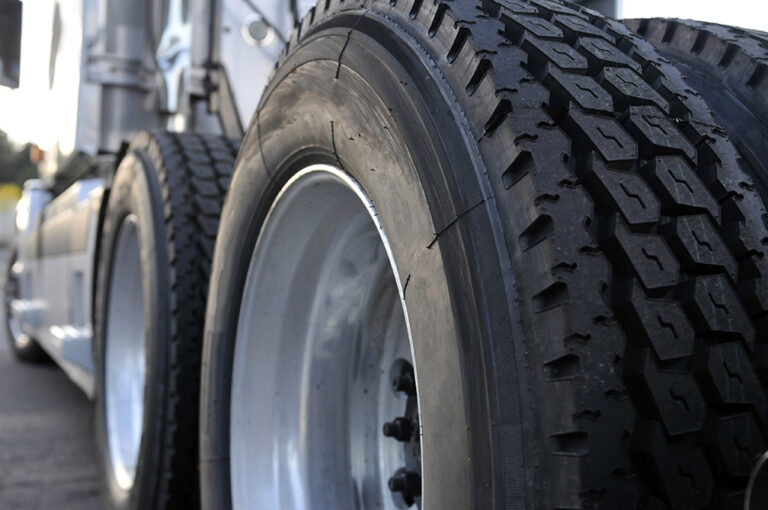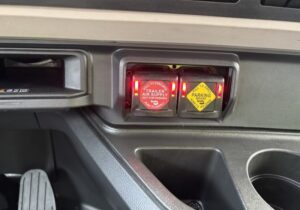If you own a truck, you know keeping good tires on it can be an expensive proposition. In fact, at most carriers, tire expense is second only to fuel when it comes to running a truck. For small fleets or single-truck owners, the experience of a tire failure plus the expense of replacement can be a huge blow to the budget.
Even without a tire failure, sooner or later, tires will wear out and need to be replaced. At $400 or more per tire for drives — and even more for steer tires — that’s an expensive proposition.
Despite the importance of tires, they are a part of the rig that is often neglected. Maybe it’s because they’re so dependable that they’re easy to forget — until there’s a problem. To maximize the miles you get from your tires, and minimize the expense of repairing or replacing them, choose your tires carefully and take good care of them.
It’s easy to be confused by advertising for tires. Claims of great traction, a comfortable ride, superior handling and long wear abound. When tire shopping, make sure you understand what you’re getting.
Tread composition is a good example. There’s no “perfect” type; every product is a compromise. Harder rubber compositions generally provide more mileage, but softer tread can increase traction and provide better handling.
Some drivers prefer a favorite tire brand, while others are more flexible as long as the tires are from a known company. In many cases, “off-brand” tires are built in the same plants, on the same assembly lines, as brand-name tires. In other cases, however, tires are built overseas in plants where quality control may be lacking.
Check online reviews posted by other buyers. You can also perform your own “review.” It’s easy to get a look at tires on other trucks when you’re at a truck stop or rest area. Look for issues with various brands and types, such as uneven wear, cupping, tread separation and so on.
Get as much information as you can about the tires, including mileage claims. Read any warranty carefully. Most pay on a prorated basis according to how much tread is left; for example, if you’ve used 50% of the tire’s tread depth, you’ll receive 50% of the value of the tire. Others pay a smaller portion of the tire’s value even if you’ve driven fewer miles.
The best tires on your truck should be positioned on your steer axles. When roads are slippery or conditions are poor, you’ll want all the traction you can get to steer the truck.
For drive axles, tread type is important. Lug-type treads can provide better traction, especially in off-road areas such as remote trailer lots. Groove-type treads may wear longer and provide a smoother, quieter ride, along with slightly better fuel mileage.
Trailer tires are usually cheapest, but you still need quality.
Pricing can vary between sources, and it’s worth looking for the latest sale. If you can, take advantage of pricing available through national accounts.
For some owners, retreads are a less expensive option to new tires. Some retread marketers carefully inspect tire carcasses and reject any that aren’t in good shape. Others will retread anything they can get their hands on. If you consider retreads, carefully inspect the insides and the sidewalls of the tire. Look for patches, dry rot, bulges or other damage.
Once they’re on the truck, how you care for your tires will determine how long they last. At a minimum, inspect your tires daily. Bulges or cuts in sidewalls will eventually fail, so don’t neglect to look at both sides of each tire. Foreign objects like nails or screws may be easy to remove, but over time they’ll work their way deeper into the tread, so it’s important to remove them promptly.
Uneven wear, cupping or other issues can indicate a bigger problem with the truck, such as misalignment or a bad rim. Deal with these issues promptly.
By far, the No. 1 issue with tires is proper inflation. The tire’s “footprint,” the portion of the tread in contact with the road, is highly dependent on proper inflation. Too much air and the middle of the tread takes all the weight. Too little air and the sides of the tire wear more quickly. Proper inflation not only makes the tread last longer, but it also provides better traction.
When tires are mounted in tandem, a low tire causes more weight to transfer to the other tire in the pair. That can create an overload situation, causing the overloaded tire to overheat and, eventually, blow out.
Truck tires can take an incredible beating, but they can also be ruined by tiny objects. Take care of your tires, and they’ll take care of you.
Cliff Abbott is an experienced commercial vehicle driver and owner-operator who still holds a CDL in his home state of Alabama. In nearly 40 years in trucking, he’s been an instructor and trainer and has managed safety and recruiting operations for several carriers. Having never lost his love of the road, Cliff has written a book and hundreds of songs and has been writing for The Trucker for more than a decade.














